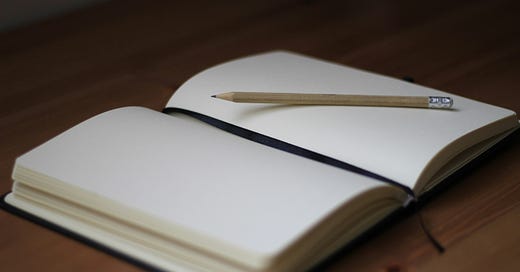Perhaps you are wondering what it is like to write a book, whether you yourself ever aspired to doing so. I certainly was curious about it back when The Creativity Choice was not even in the thought process. And if you are anything like me, the process might seem daunting.
How did my book come to be? In a conversation, a colleague whose opinion I value (shout out to Dr. Robin Stern) simply said, “You should write a book.” She noticed something I did not at the time. She thought my research communicated important messages about the misunderstood nature of creativity and creative work. Robin is a master communicator. And I listened.
I had much to say about creativity and it was clear to me that there was a need for a book that applies creativity science to understand the process of BOTH coming up with original and valuable ideas AND transforming them into performances and products that influence our lives.
The problem was that I could not imagine writing a book. My first instinct was to dismiss it. After all, I am a scientist and writing for non-scientists requires a very different skill set than writing scientific papers. Writing a book also seemed like a monumental task. Where to start?
What made the difference to me was reframing the task from “writing a book” to “well, what is a book but a set of chapters”. A single very large task now became a series of smaller and much more imaginable ones. Haven’t done it before, but it should be doable.
There was still the matter of developing the skills of effectively communicating to the general public – people who are certainly motivated and interested, but not necessarily scientists themselves. What I knew is that skills are developed. It is a matter of taking the first step. So I started a blog. Several years later, I can tell that I learned much in the process. Not the least that people were hungry to learn about the creative process beyond coming up with new ideas.
Then, there are formal issues in book writing and publishing – getting a literary agent, writing a book proposal, securing a book contract. All problems to be solved. All taking time.
I was lucky to have landed a great agent serendipitously. Just as I started to talk to friends and colleagues who went through this process previously, I was approached by an agent who found my blog and was wondering if I was interested in writing a book. I take luck seriously. I did not have to ‘sell’ the book to the agent, she was already interested in the concept. A winning combination.
Writing the book proposal was a new experience. It is not only about communicating the content about creativity, what it is and how it can be built, but also about selling yourself as an author. I believed I was the right person to write this particular book, but convincing others of it was an interesting challenge. Which comes back to having an experienced and collaborative agent.
It is common knowledge that even very popular books get initially rejected, sometimes many times. So, I was fully prepared for rejections. In retrospect, I find the flavors of the rejections fascinating. After initial interest, there were two types of rejections from publishers. The first was about the nature of the book. Some publishers were only interested in a step-by-step creativity cookbook. The truth is that creativity does not follow a step-by-step process. I understand the desire for one, seems comforting for anyone having doubts about their abilities to make creativity happen, but alas, it does not work that way. If this is the reason for the book proposal to be rejected, I was fine with it. I would not find it ethical to promise foolproof steps.
The second flavor of rejections was about me as the author. Some publishers were only interested in a creativity book from a creator at one of major companies in an obviously creative industry, such as Disney or Apple. These books can be very helpful indeed, and again, I can see the appeal. I have myself read Creativity Inc. by Ed Catmull multiple times. But I do not work at Disney or Apple and if the reason for the book proposal to be rejected was that, I was fine with it. Well, at least there was nothing I could do about it.
Luckily, these were not the only kinds of feedback. I loved Public Affairs from the first conversation with the editorial and PR teams. The vision for the book in my mind and their vision for the kind of creativity book they were looking for fit in a way that was just right.
Now, it was just a matter of writing the book. Just a minor detail.
Stay tuned until next week … [I always wanted to say that]





